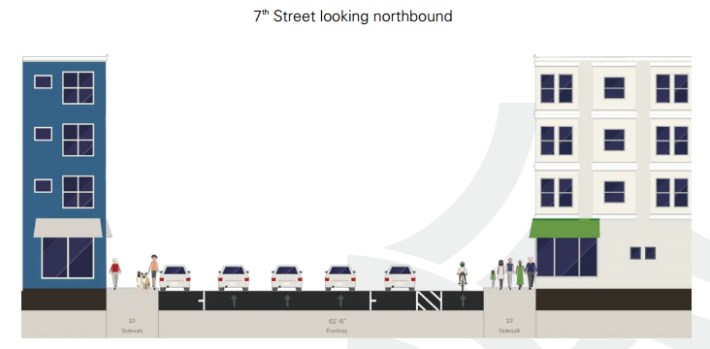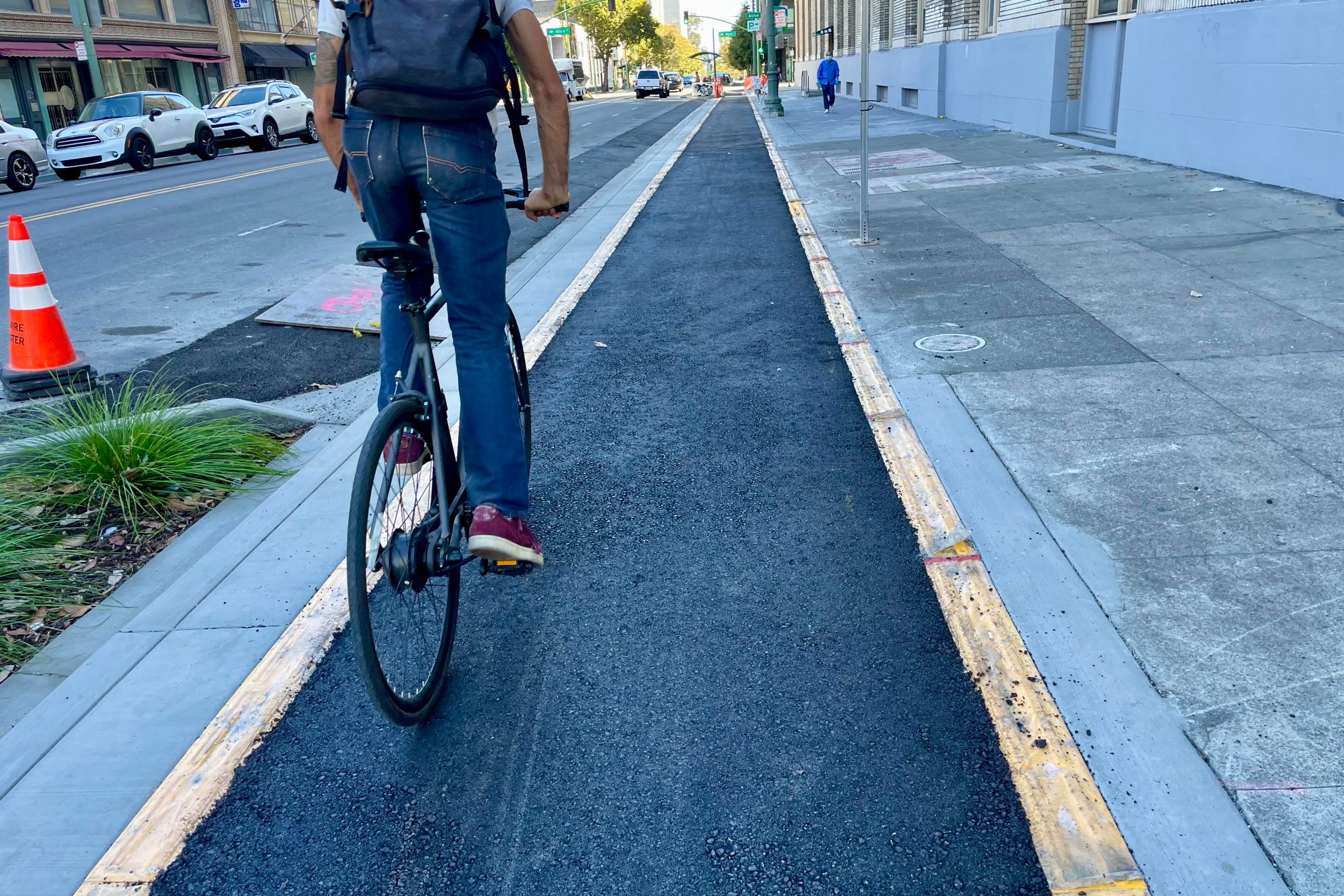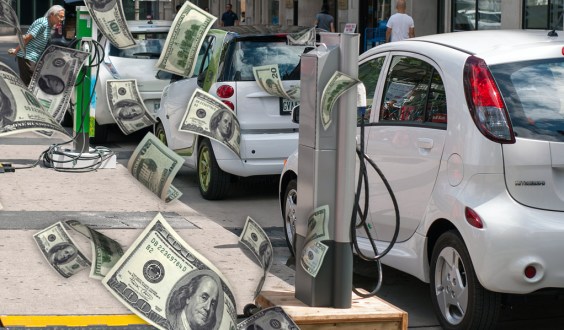
Last night, SFMTA held an open house at the Bayanihan Community Center in the Mission to get input on the 7th and 8th Streets safety project, which will include parking-protected bike lanes on both streets on the six-block stretch between Market and Folsom. Some 45 people showed up to learn about the designs and give feedback.
Streetsblog readers will recall that as part of Mayor Ed Lee's Executive Directive, SFMTA is supposed to complete these bike lanes in the next nine months. The open-house was a step in the process. "It's to share recommendations for conceptual designs and collect input on curb management and accommodating loading and parking," explained Jen Wong, a transportation planner with SFMTA's Livable Streets division.
Curb loading issues--which were literally front and center in the room--at first seemed a bit over prioritized, considering the project's new time frame and that the Mayor's Directive, of course, was a response to the deaths of Heather Miller and Kate Slattery, who was killed at 7th and Howard. But an SFMTA official at the meeting explained they are trying to get in front of curb loading issues and "address people's needs" to avoid the kind of blowback that came with street and transit improvement projects on Taraval and Mission.
Whether or not that will work is an open question. But what the meeting seemed to reinforce is 7th and 8th are getting parking protected bike lanes no matter what. It's just a question of details on their configuration.
In fact, Streetsblog couldn't find anyone at the meeting who wasn't supportive of adding bike lanes and making SoMa safer for all users. "People have to be able to do their jobs in a safe way," said Adam Long, bicycle advocate and occasional Streetsblog contributor. And while he acknowledges that businesses must be able to take deliveries, he draws the line on provisions that would maintain street parking generally. "We need clear loading and parking areas--it's possible to have everything, except maybe we can end free storage for private vehicles."
Elias Zamaria, also a bicycle advocate, agreed. "It's crazy...cycling in SoMa," he said. "Parked cars to the right, cars to the left, if I make one wrong move I'm going to get injured--it's just too scary for most people to cycle here."
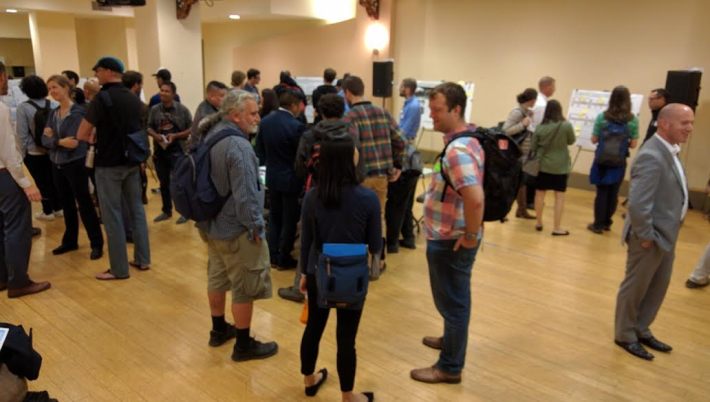
Kyle Donnelly, who cycles frequently through SoMa, was pleased to see SFMTA's drawings of parking protected bike lanes, but he was concerned about the entrances to driveways. "They need rumble strips where cars start turning into the driveway," he said. "Or bumps, or something audible to remind drivers to be careful as they make a turn before they cross the bike lane." A planner with SFMTA agreed and encouraged Donnelly to write that on the comment board.
Donnelly also brought up a concern that was echoed by many cyclists in the room: lack of protection in the intersections, which is where most serious injuries and fatalities are happening. "That's where I'm scared when cycling," he said. Mike Sallaberry, Project Manager for SFMTA's Livable Street division, explained they are looking at protected intersections moving forward, but for now they're focused on what they can do quickly--meaning the parking protected lanes.
And SFMTA has a protected intersection for 9th and Division in the works. That said, Streetsblog noted that the schematics at the open house all showed the paint treatments for the protected bike lanes ending at intersections (sometimes there were sharrow markings in the intersections, other times nothing). Just as the city paints crosswalks in intersections, specifically to remind drivers where to expect pedestrians, there's no reason a bright green bike lane treatment can't continue across intersections as well. Additionally, Streetsblog isn't a fan of mixing zones for right turns, especially since the Dutch are moving away from them.
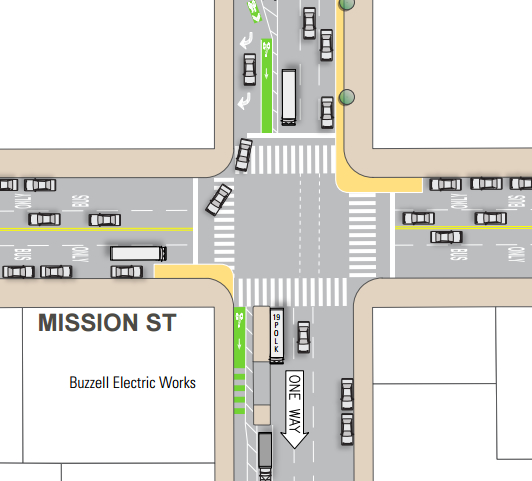
Sallaberry and others, meanwhile, were impressed with the turnout and level of concern. "I'm glad we're here to talk about this project," said Sallaberry. Planners also explained that the city will be building relatively simple boarding islands for buses, so buses don't have to pull across the bike lane to take on and discharge passengers. One planner said they're going to use pre-fabricated boarding islands that can be bolted down to the existing asphalt, to keep costs down and get them in quickly.
Not everyone who came to the meeting was a cycling advocate and/or planner. Mel Beetle, 76, is board president of the Home Supportive Services Public Authority. He came out of concern for senior citizens who live in the area. "There should be bicycle lanes on all the major streets," he said. To Beetle, anything that gets cars to slow down makes it safer for the elderly: "Seniors have been hit and killed on these streets."
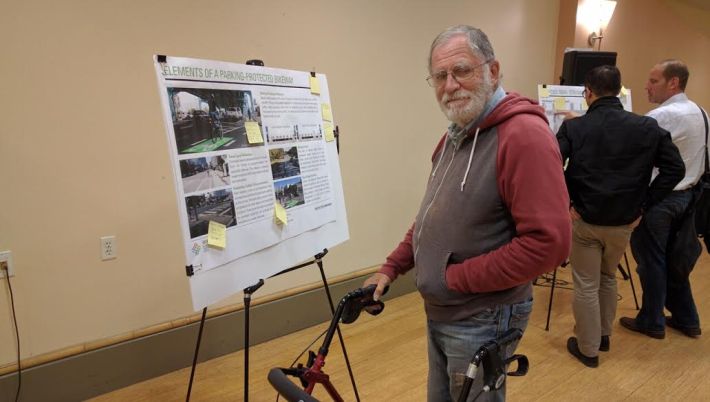
Construction, meanwhile, is slated to begin in the spring of next year.
